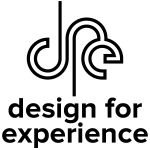The international Design for Experience awards are in full swing!
Check out the freshly launched DfE awards site for a closer look at the categories, the judges, the philosophy of the program and UX Magazine’s role. You can also sign up for email updates, nominate any products, services, or teams that you think deserve some DfE recognition, or submit your own application for an award.
Follow DfE on Twitter and like us on Facebook for updates on the awards and the submissions. We encourage you to reach out to us on both platforms if you know of something the DfE judges should be looking at.
You can nominate via Twitter by pasting the following text into a tweet:
Hey @uxmag & @dfexp check out <product, service, or team> for <category> – https://uxm.ag/1c7
On Facebook, post a message to the Design for Experience wall with your nomination.
Over the next couple of months, we’ll be publishing a series of short articles in UX Magazine that will explain our 24 categories in greater depth, but you are encouraged to submit any general nominations as well. If you think a product, service, or team is great, but aren’t sure where it belongs, nominate it now and we’ll take a look.
We’re excited to share what we learn as our judges dig into submissions over the coming months. The deadline for submissions is December 15, so send us your nominations soon and often! Together we can make the international Design for Experience awards something special.







